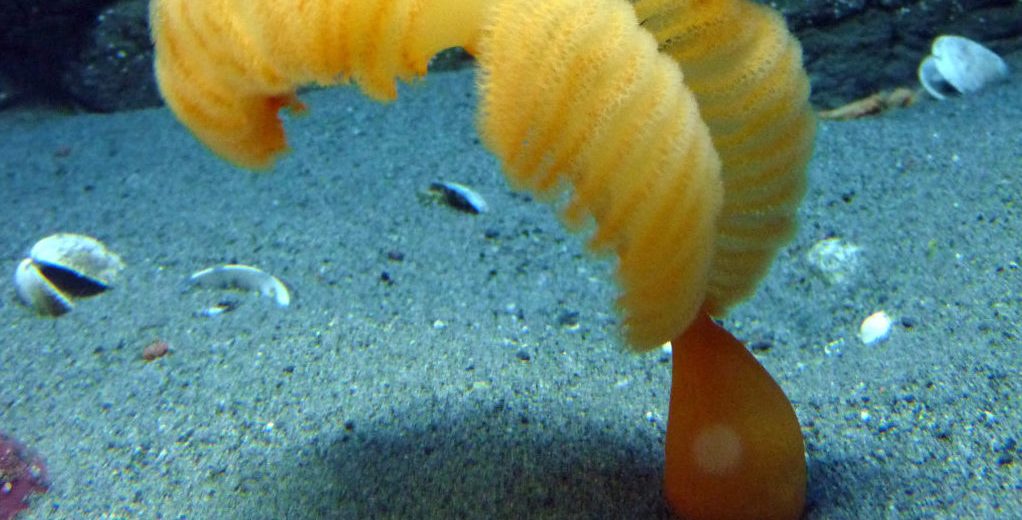
The sea pen, aka sea pansies, are a cosmopolitan species that can be found in oceans all over the world. These peculiar creatures spend their lives partially dug into the substrate with their feather-like proboscis sticking out and gathering food. These creatures are mostly undocumented with the IUCN. However, the tall sea pen is listed as Vulnerable. Their primary threats are climate change, pollution, and over collection for the pet trade.
First the Stats…
Scientific name: Pennatulidae
Weight: Up to 1+ lb.
Length: Up to 18 inches, plus up to a 6.6 foot extension
Lifespan: Estimated up to 100 years
Now on to the Facts!
1.) These bazaar creatures inhabit both tropical and temperate waters throughout the world’s oceans.
2.) Sea pens have been found at the crushing depths of up to 20,013 feet!
3.) Only the sea pen species that belong to the suborder Subselliflorae have the feathery appendage. Those that belong to the much larger suborder Sessiliflorae don’t possess the feathery structures and grow club-like formations.
4.) The earliest accepted fossils of sea pens are over 538 million years old!
5.) Seeing as sea pens are considered octocorals, sea pens are colonial animals with several polyps – which resemble miniature sea anemones, each with 8 tentacles. However, unlike other octocorals, a sea pen’s polyps are specialized into specific functions: a single polyp develops into a stiff, erect stalk (called the rachis) and loses its tentacles, developing a bulbous peduncle at its base.
But wait, there’s more on the sea pen!
6.) The other remaining polyps branch out from this central stalk, and form water intake structures (called siphonozooids), feeding structures (called autozooids) with nematocysts, and reproductive branches.
7.) The entire colony is strengthened by calcium carbonate in the form of spicules as well as a central axial rod.
Did you know…?
It is estimated that of the 450 described species, only approximately 200 are actually valid.
8.) Being typically sessile (stationary) animals, sea pens are able to relocate and re-anchor themselves when necessary, using the available ocean currents.
9.) Sea pens feast on plankton that drifts in the ocean currents, by positioning themselves facing said currents.
10.) Nudibranchs and sea stars feed on sea pens. Some of which feed exclusively on them.
But wait, there’s still more on the sea pen!
11.) Some sea pens have the ability to emit a bioluminescence (a biological form of light emission) when touched.
12.) Other sea pens can rapidly eject water from their proboscis and recoil into their peduncle.
Did you know…?
Sea pens are sometimes sold in the saltwater aquarium hobby, but don’t typically live long, as they have highly specialized diets and water parameter requirements.
13.) Reproduction takes the form of coordinating a release of sperm and eggs into the water column that meet and fertilization takes place.
14.) The fertilized eggs develop into larvae called planulae that drift freely for about a week or so before settling into the substrate.
15.) Some smaller and juvenile fish take shelter in and around sea pens.
Now a Short Sea Pen Video!
Be sure to share & comment below! Also, check out the Critter Science YouTube channel. Videos added regularly!
Want to suggest a critter for me to write about? Let me know here.
Photo credit: D. Young



